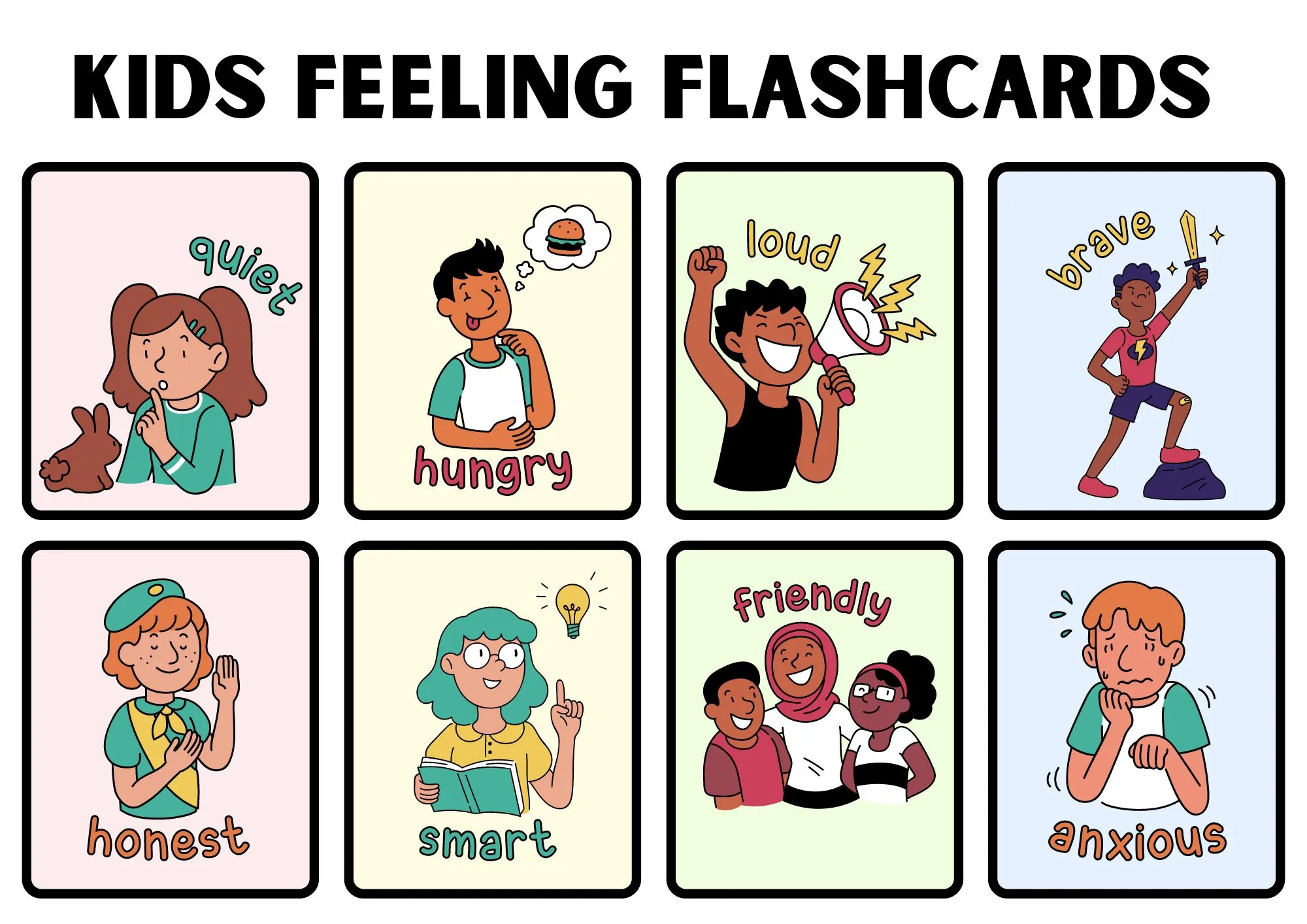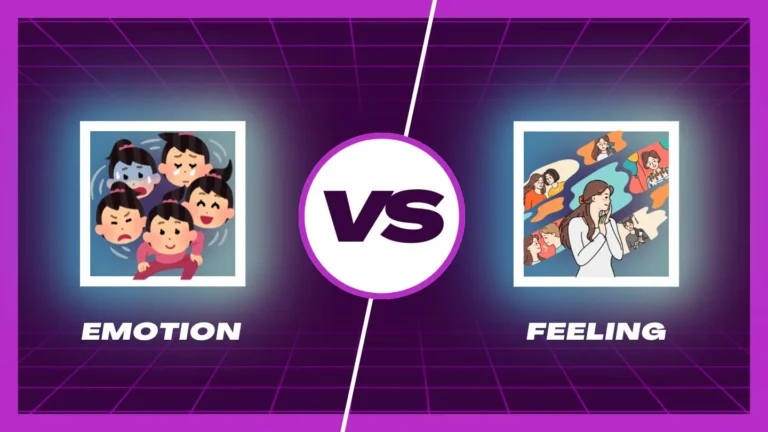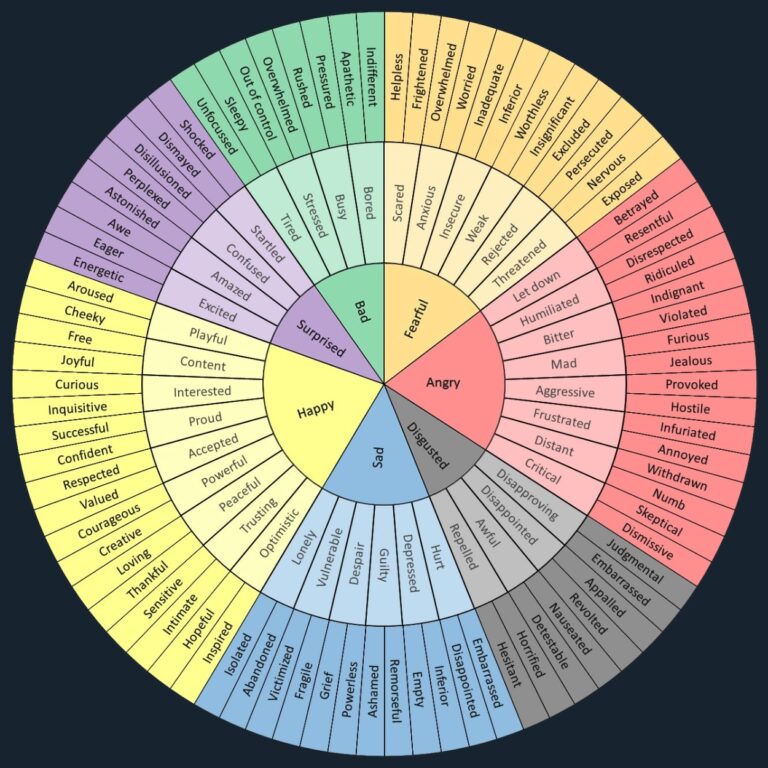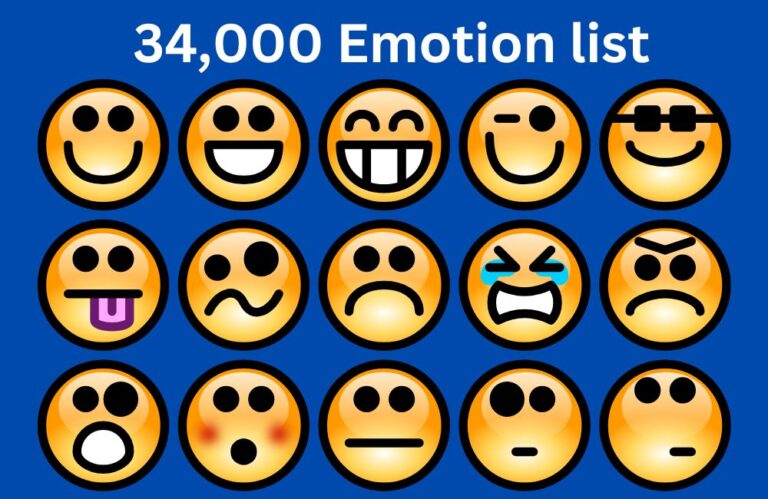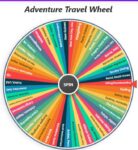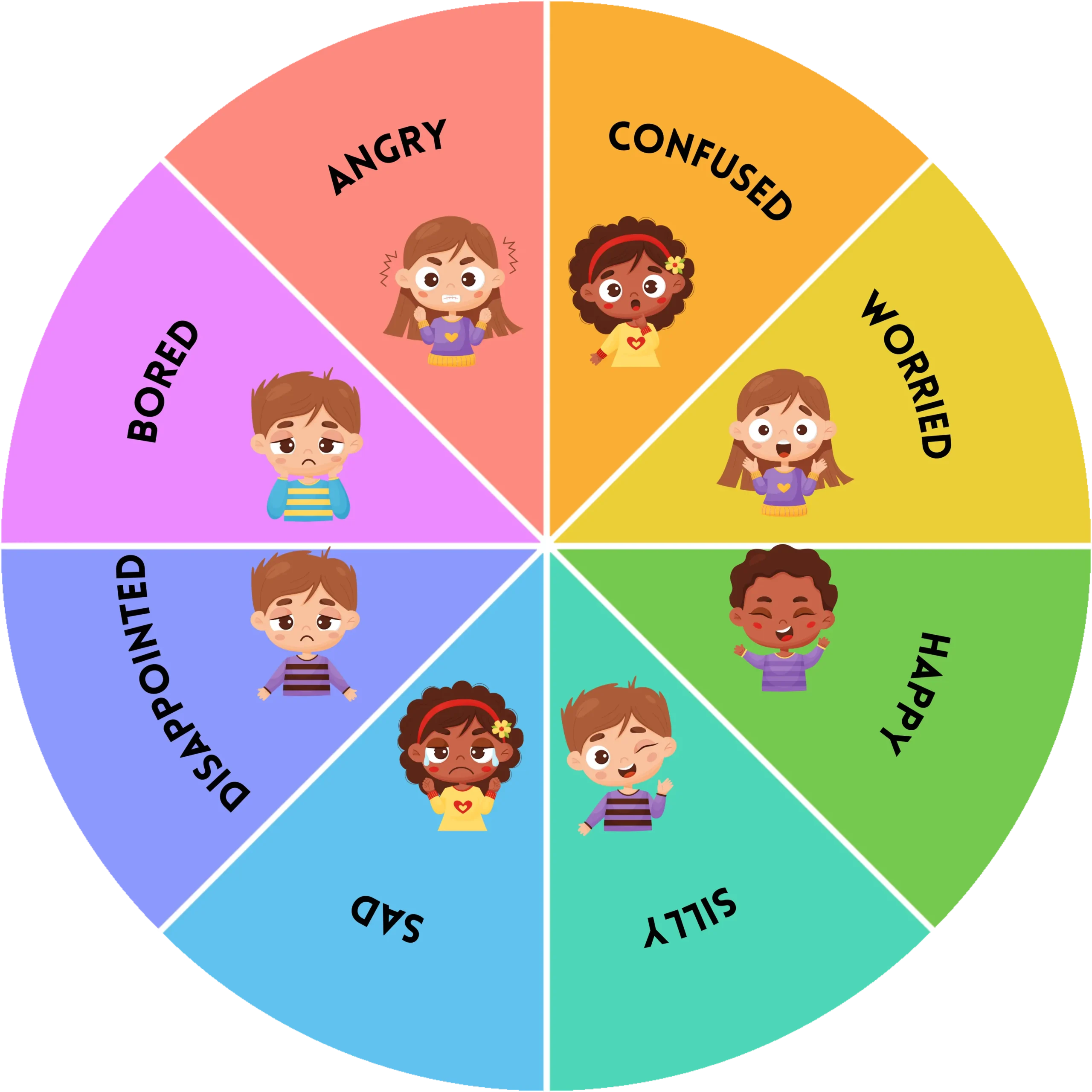
Have you ever seen your little one grapple to put his/her feelings into words? It may be hard for children to grasp and express their emotions and even harder for parents and educators to guide them through it. That’s where the feelings wheel for kids comes in.
This simple device assists young people to understand and name their feelings which makes it easier for them to articulate what is happening inside of them.
In this blog post, we will be discussing what the feelings wheel is all about why it is so helpful for kids, and how you can employ it in your everyday life. If you are a parent, teacher, or therapist the feelings wheel can prove useful in helping a child grow emotionally.
| Here are brief explanations for each emotion |
| Happy: Feel like smiling, sharing interests, or playing with a friend. Excited: Want to play, exercise, or take a sensory break to release energy? Silly: Feel like exercising, engaging in messy play, or having a sensory break to have fun. Tired: Might need a snack, a nap, or some quiet time to rest. Upset: Need cuddles, deep breaths, or to find a safe space to feel better. Angry: Could benefit from a time out, deep breaths, or a sensory break to calm down. Scared: Need cuddles and to share worries to feel reassured and safe. |
What is a children’s feelings wheel?
The feelings wheel is a colorful visual tool that helps children identify and name emotions. It can be considered as a graph showing diverse emotions such as happy, silly, or angry, which will help kids understand their feelings.
A psychologist named Dr. Gloria Willcox came up with it, and today it is quite popular to teach children about emotional intelligence. Children may use the Feelings Wheel to better recognize and express their emotions, this is the first stage towards controlling them properly.
How to Use the Feelings Wheel with Kids
Introducing the feelings wheel to kids can be simple and fun. Start by showing them the wheel and explaining each emotion in easy-to-understand words. Make it a part of your daily routine by checking in with the wheel together every day, asking your child to point out how they’re feeling.
To make it more engaging, turn it into a game or use it in storytelling. For example, you can create stories or role-play scenarios that involve different emotions from the wheel. This way, learning about feelings becomes interactive and enjoyable, helping kids become more comfortable with expressing themselves.
Examples and Practical Applications
The wheel of emotions can be applied in different contexts to support children in articulating their sentiments. In class, the circle time done during morning hours can introduce the wheel so that children can tell how they feel using it as a control tool.
In family discussions at home, parents have the option of using the feelings wheel to help children describe and share about their day including what emotions they experienced. The therapists too could bring in this gadget when handling young clients thus enabling them to find out and explain their emotions within a very secure environment.
Employing this feeling mechanism practically like this for kids therefore promotes enhanced emotional intelligence and communication abilities.
Customizing the Feelings Wheel for Kids
In order to make the feelings wheel still more effective, you can amend it so that it meets the needs of your child. For young toddlers, reduce emotions to simple ones, e.g., happy, sorrowful, or mad ones, etc.
By the time they get older new more complicated ones could be introduced. Among other things, cultural relevance should not be forgotten since; this makes sure that emotions as well as pictures used in it would be familiar to the child.
The child should be encouraged to personalize his/her feelings wheel through the incorporation of self-feelings alongside drawings. This not only makes the tool more relatable but also helps them take ownership of their emotional learning journey.
Conclusion
The feelings wheel is a simple yet powerful tool that can greatly benefit kids by helping them understand and express their emotions. By using it regularly, whether at home, in the classroom, or in therapy, children can develop better emotional awareness and communication skills.
Customizing the wheel to suit your child’s age and cultural background makes it even more effective. Start using the feelings wheel today and watch your child grow emotionally.


